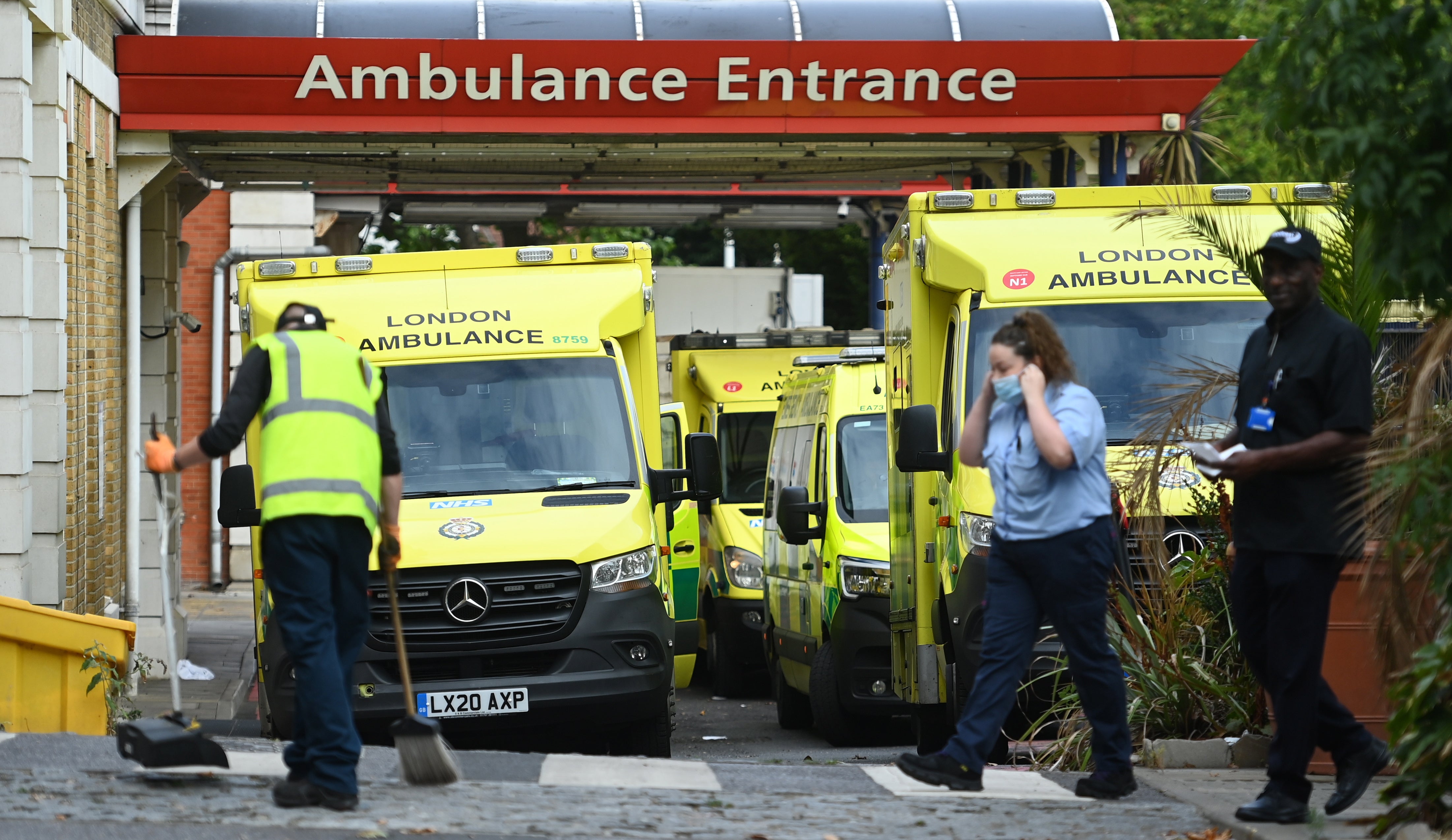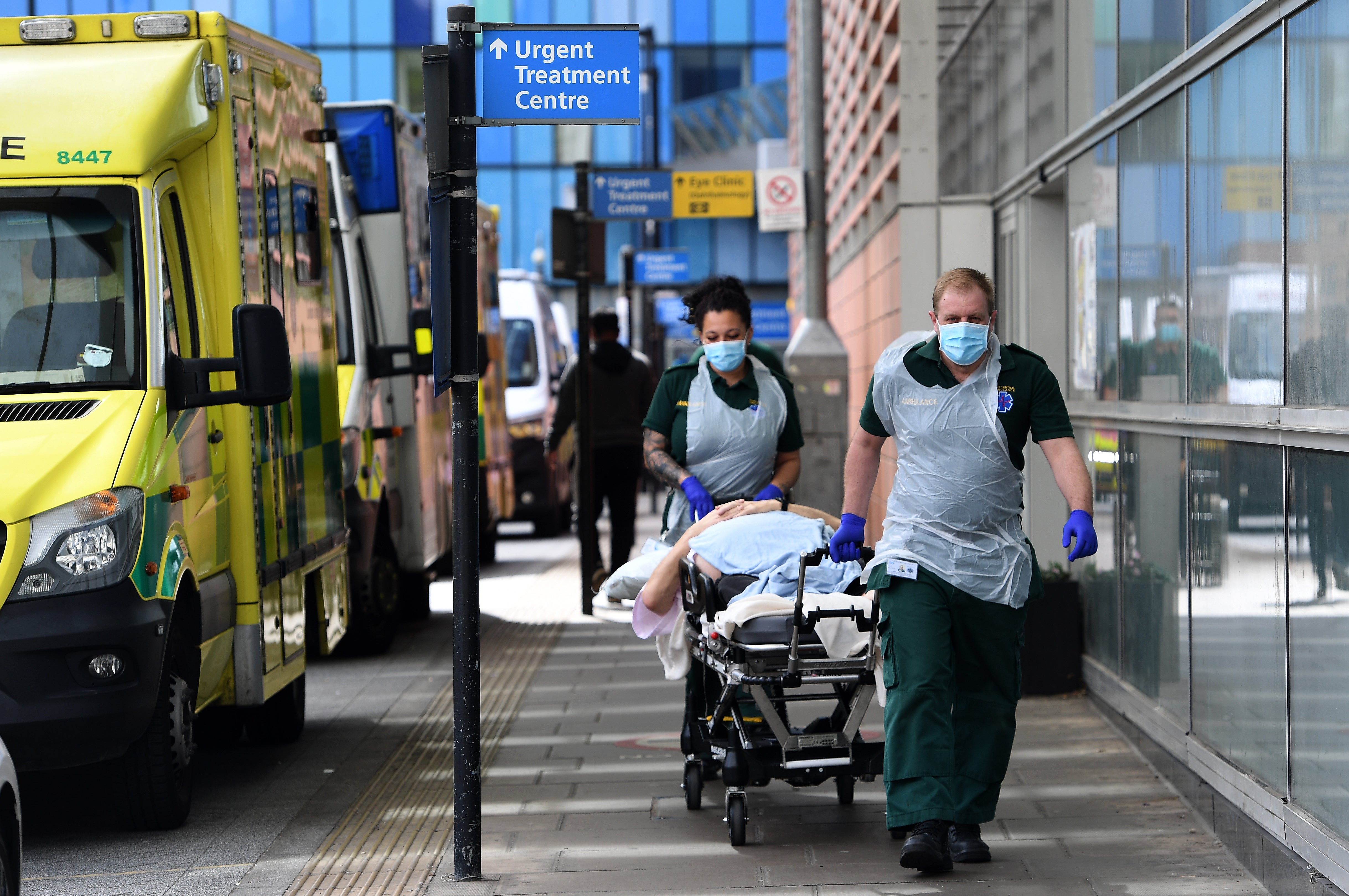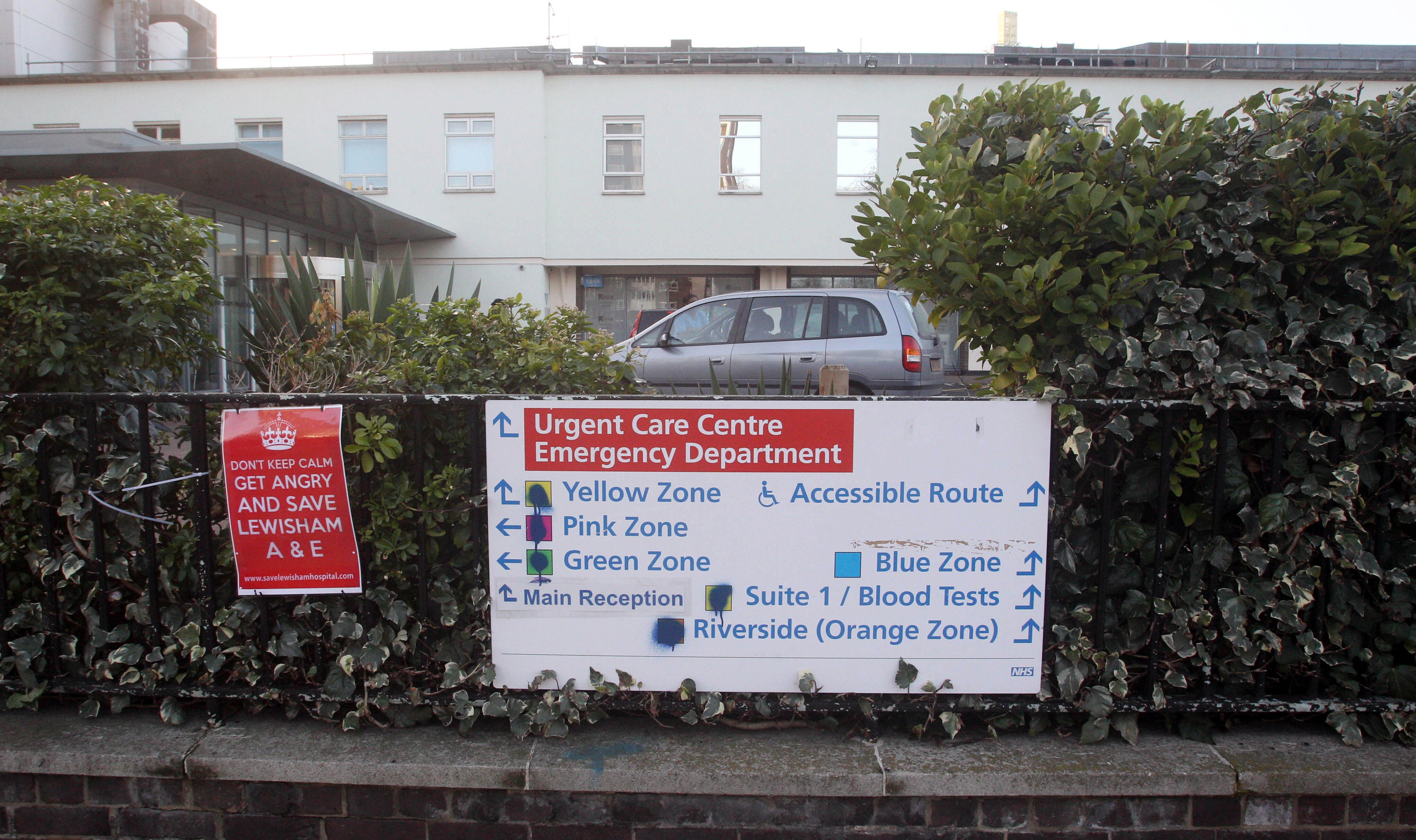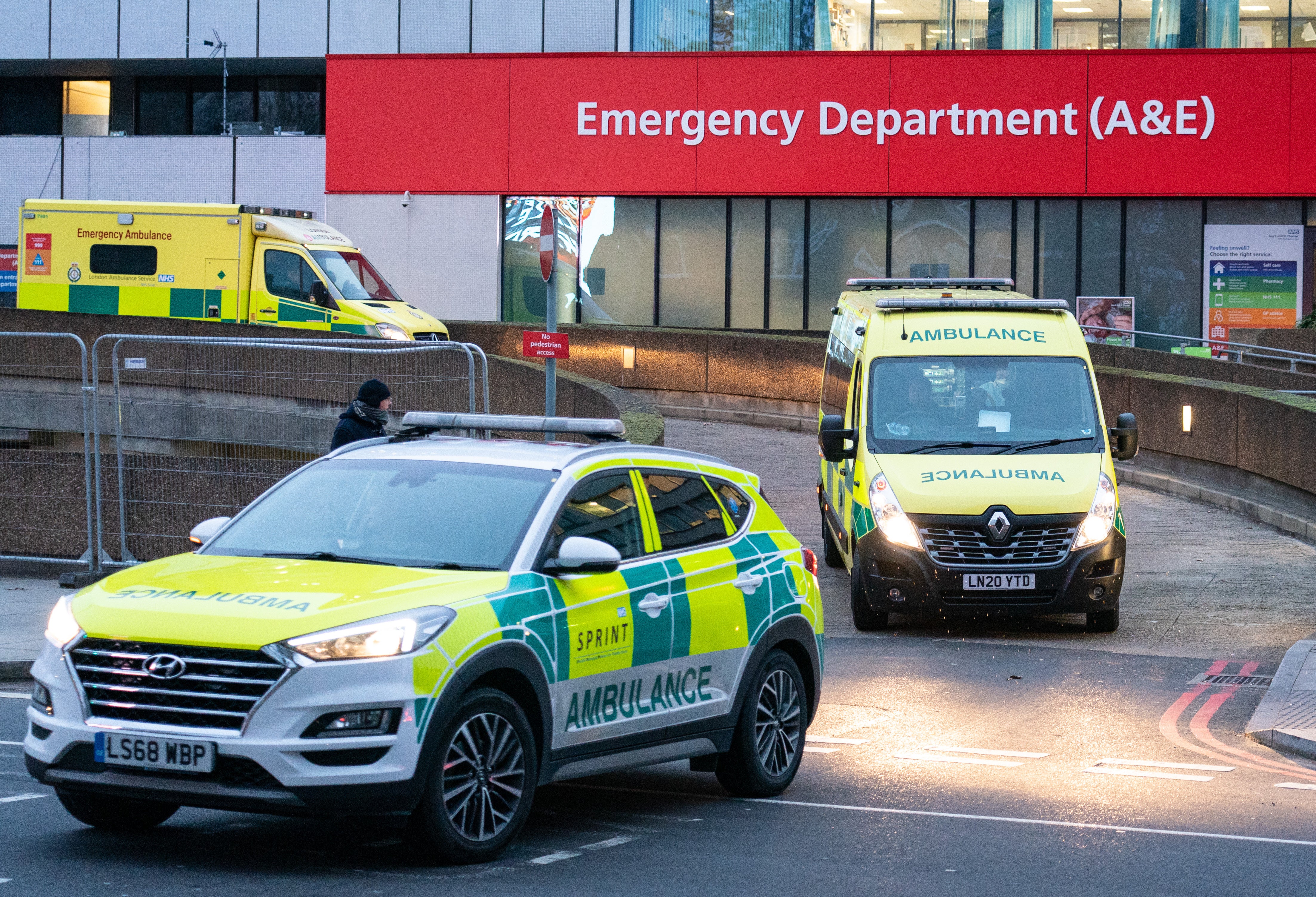NHS in crisis: 12 hours on ambulance front line with ‘the one service which cannot say no’
‘999 is for life-threatening emergencies’ – but a day out with two paramedics shows this is often not the case
Your support helps us to tell the story
From reproductive rights to climate change to Big Tech, The Independent is on the ground when the story is developing. Whether it's investigating the financials of Elon Musk's pro-Trump PAC or producing our latest documentary, 'The A Word', which shines a light on the American women fighting for reproductive rights, we know how important it is to parse out the facts from the messaging.
At such a critical moment in US history, we need reporters on the ground. Your donation allows us to keep sending journalists to speak to both sides of the story.
The Independent is trusted by Americans across the entire political spectrum. And unlike many other quality news outlets, we choose not to lock Americans out of our reporting and analysis with paywalls. We believe quality journalism should be available to everyone, paid for by those who can afford it.
Your support makes all the difference.Pulling out of a busy south London A&E in the middle of a 12-hour day shift in mid-August, paramedics Harriet Walton and John Chilvers comprise one of the only free crews in London.
With July’s ambulance response times for the most urgent 999 calls being the worst on record, and 152,000 ambulance crew hours lost to delays in June, this summer has exposed the extent of the problems facing the ambulance service, with all 10 trusts put on “black alert” in what is traditionally a quieter season.
Response times have collapsed – with some patients waiting several hours following a 999 call, and 4,000 patients estimated to have come to severe harm due to handover delays in June – prompting health leaders to warn that the delays are the biggest safety risk facing the NHS.

As news of the crisis dominates headlines, The Independent was given exclusive access to join two London Ambulance Service senior paramedics.
Grappling with the consequences of a broken social care system and a backed-up NHS, they say that the pressure is mounting because they are “the one service which cannot say no”.
‘A last resort’
The start of the shift is eerily quiet, and the pair from Brixton Ambulance Station begin their day with an unusual silence from the dispatch team. But the 20 minutes of stillness are just the calm before the storm, as the first category-two alert comes in – a man with a severe mental health condition is in crisis.
The blue lights are turned on, and we soon arrive at the door of the patient. Ms Walton, who is aged just 21, and Mr Chilvers, 27, speak calmly to the man. He is agitated, incoherent and delusional, but the pair work quickly to assess the risk he poses to himself.
As his behaviour escalates, they are forced, reluctantly, to call for police assistance, and for an advanced paramedic to help them take the man to hospital.
The differing priorities of the police force and paramedics are clear as the officers question whether it’s possible to leave the man.
A mixture of drugs and his worsening mental health means he must be assessed at hospital, but without access to a number for his community mental health team, A&E is the only option.
The decision to call the police to help restrain the man is not taken lightly, but he ticks all the markers on his own care plan for needing hospital assessment. It is a difficult situation to watch, as he is eventually restrained by six officers and taken with his head down into a caged police van.
The paramedics are able to calm him, and he is taken to King’s College Hospital A&E, which is near the Maudsley mental health hospital.
A dissonance of beeps and alarms, along with shouting and scurrying clinicians, meet the team at an ambulance bay at the hospital, which is already full as three other ambulances wait to hand over patients. While he waits, the patient deteriorates again.
Three hours have passed between the first dispatch call and the moment when he is eventually handed over to an A&E team – and these calls can happen at least once a day.
Covid hasn’t gone away
Upon leaving the King’s College emergency department, a hospital announcement warns that one ambulance has already been waiting for four hours to hand over a patient and another has waited for two.
One of the crews is yet to see any patients this morning, and the paramedics have begun their shift watching the doors of an A&E ambulance bay for a chance to hand over.
Just 250 ambulances are available for the day. Although it is more than the 156 on standby the night before, this figure is only around half of what is needed, The Independent understands.
At 12pm, we are the only ambulance available for dispatch in the city.

The calm of the morning becomes a distant memory as another “cat two” call comes in – a Covid-positive patient struggling to breathe.
The pandemic hit the NHS like a big red bus this summer at a time when calls to ambulance services have gone through the roof. While the country continues to “live with Covid”, the virus is still creating demand.
As a bystander, it is unnerving to enter the house of a Covid-positive patient, but Harriet and John are unfazed and assess the woman. Although her Covid symptoms are nothing to worry about, an underlying health condition means that the crew has to take her to A&E.
The wait is quicker this time, but the King’s A&E is now busier, with patients everywhere, while the same ambulance crew we left behind 90 minutes ago are only just leaving.
Fighting wider failures
Paramedics, by the very nature of their job, come into contact with all facets of life and see first-hand how deprivation and social inequalities shape people’s health. After two years of pent-up health issues, and as the NHS tries to tackle its mammoth backlog, they see patients who are seriously ill and in need of urgent care because their condition has been left unaddressed.
Call-outs to people whose primary problems are not to do with health, but are instead a result of poor social housing or inadequate social care, are common. The ambulance service, which is meant to be for emergencies, is just another part of the NHS, picking up the slack of a broken system.
During our third call, we visit a man with learning disabilities, who is bedbound and visibly unwell. This is not the harrowing story of a neglected care-home resident, but an example of a caring environment where the man’s young careworker shines.
Discussing his patient with the paramedics, the carer laments the red tape and funding problems that have prevented his patient from being moved into a home that can better support his needs. Like so many within the care industry, he is considering leaving the job because of the low wages.
As the NHS faces unprecedented pressure, good care staff can often be the difference between taking a patient to hospital and keeping them at home.
‘No beds left’
We end the shift with a woman who is dealing with multiple health conditions, a mental health diagnosis and a complex social situation. As we’re let into her home, she’s in a vulnerable state and crying in pain.

She is the last patient of the day, and we ferry her to Lewisham A&E, where eight ambulances and several police cars are queueing outside. The corridor is busy, with 12 patients in chairs as others are wheeled in on trolleys. Every cubicle is full, and there are no beds.
The site could be mistaken for a police station, given the number of officers accompanying drunk patients and people in mental health crisis. One officer says he spends at least two shifts a week at A&E.
Luckily the patient with us is “fit to sit”, and we’re able to hand her over to hospital staff, leaving scores of patients and several ambulance crews in our wake. Exhausted after 12 hours, I leave with a renewed appreciation for our frontline NHS staff.
‘We cannot say no’
“999 is for life-threatening emergencies,” Harriet and John tell The Independent after their gruelling 12-hour shift.
The pair say this with no judgement of their patients: their job is to attend regardless of the person at the end of the call. They are passionate about their role, and want to help people in their time of need.
However, like many paramedics, much of their time is being spent on calls that are not life-saving. Most of the calls they attended today were labelled “category two”, with patients listing symptoms of “breathing difficulties”, “chest pain” and “numbness”.
However, members of the public might rightly question whether some of these patients needed an ambulance.
John says: “A lot of our problems are caused by social care and the underfunding in it. The A&Es are busy because they can’t move people on to the wards, and the wards are full because they can’t get people into social care.”
He adds: “We’re the one service which cannot say no. If someone calls 999 and says they’re having breathing problems, we have to go. You just don’t know; there’s so many patients we go to and if we got there 10 minutes later, they would’ve been dead.”

Calls from people who don’t need an ambulance put more pressure on call centres. During the height of the heatwave in London, the wait for some 999 calls to be answered reached 10 minutes, The Independent understands, whereas the target is for calls to be answered within 60 seconds.
Each ambulance dispatched to a patient who could make their own way to A&E, or could wait for a GP appointment, is an ambulance that cannot be sent to a dying patient.
“Covid is on the rise, hospitals are so busy, GPs are so busy, so people are calling an ambulance to have a clinician see you at home. I think we’re fighting the effects of so many people who weren’t going to hospital [because of the pandemic] – their appointments were cancelled, and their health suffered – and so now we’re seeing the effects of people not being seen,” says Ms Walton.
“We’re seeing loads of conditions picked up late, cancers being picked up late, people suffering from high blood pressure, so more people having heart attacks and strokes.”
Both paramedics outline the need for more money.
Mr Chilvers says: “We need more funding. For those life-threatening emergencies [for which] we are not getting there quick enough. For stroke patients, millions of neurons are dying every minute we don’t get you to hospital, and the later we get you to hospital the longer it will take for your recovery.
“If we get to you several hours later, you might not get the movement in your hand back, and we’re not getting there for these people. These people that have waited a long time, there will be people that are really ill and people that are fine. Actually, the majority can wait a bit longer.”


Join our commenting forum
Join thought-provoking conversations, follow other Independent readers and see their replies
Comments